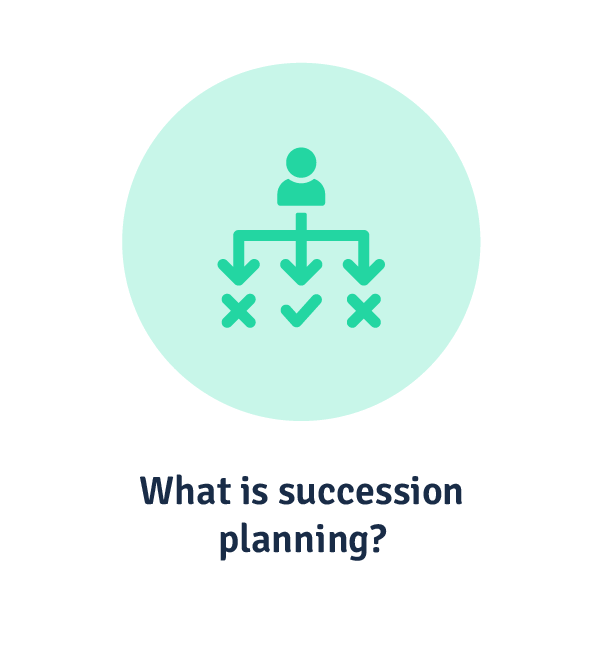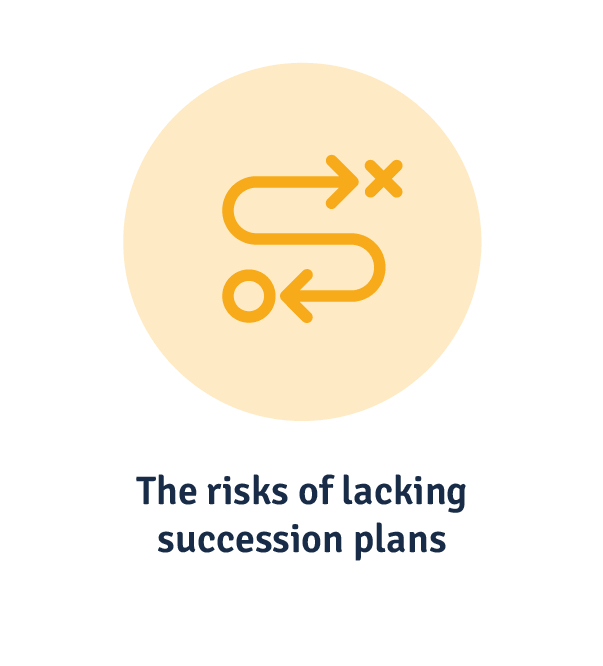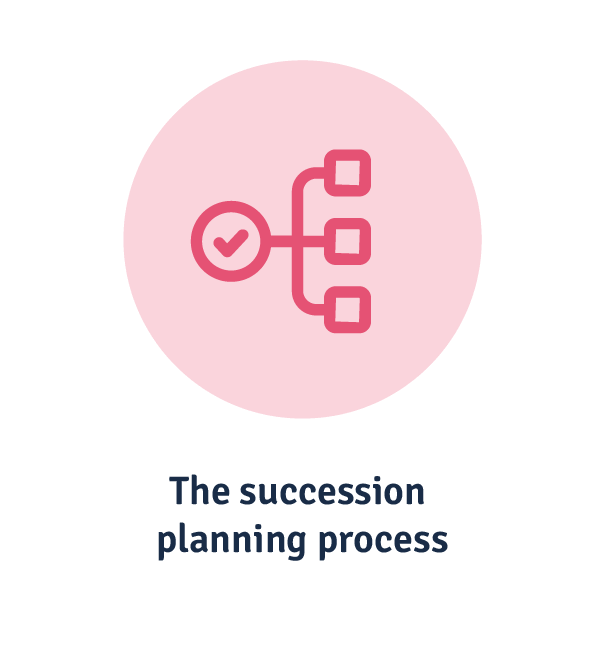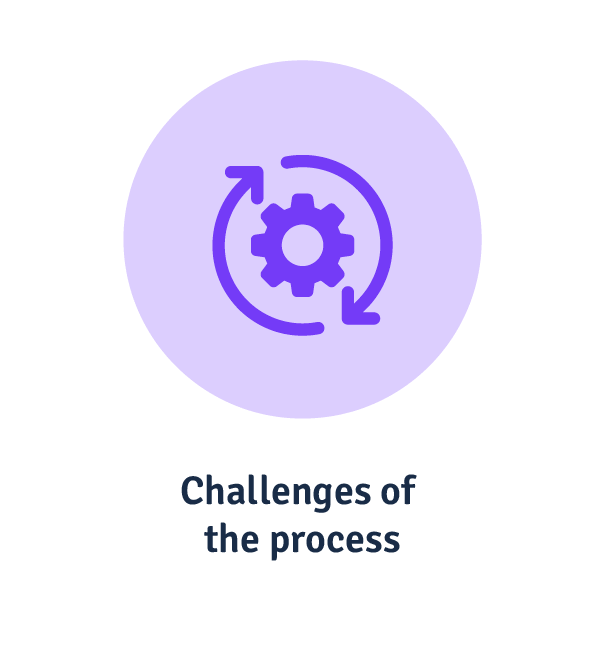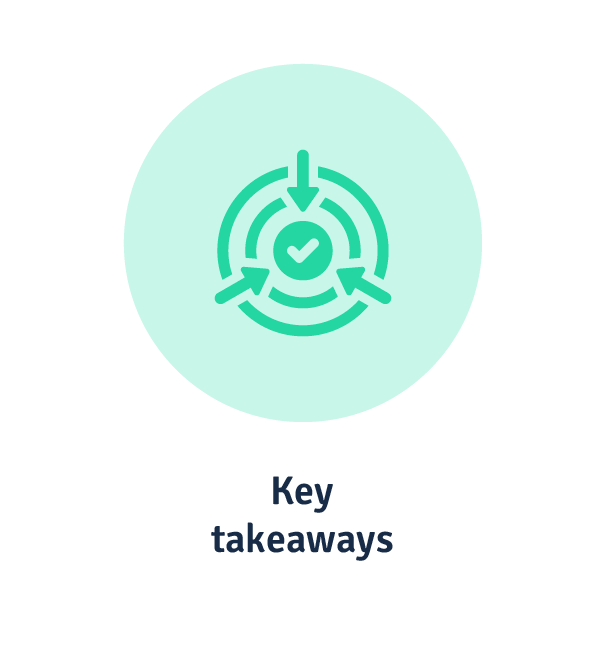What is Succession Planning and Why Is It Important for Business Strategy?
Most of Gen Z expect to become managers soon after entering the workforce. On the other end of the spectrum, Baby Boomers are retiring fast. This dynamic, and all the other workforce issues in between, makes succession planning more important than ever.
Let’s talk about what makes for a good succession planning process, some pitfalls to avoid and the dangers of not doing it at all.
What is succession planning?
Succession planning is a future-focused process of preparation for maintaining a talent pipeline. It identifies the knowledge, skills, and behaviours needed for certain critical positions and develops plans to prepare individuals to potentially perform those roles. Rather than choosing successors when a role becomes vacant, succession plans are usually prepared over a 12- to 36-month period.
What is the goal of succession planning?
Given succession planning focuses on leadership positions, there are a few outcomes you can expect.
- Better management of critical roles, leadership skills, and the key competencies required for those positions.
- Identification and mitigation of capability gaps that may impact business growth in future.
- Ability to quickly replace subject matter experts with highly specialised capabilities.
- Retain and pass on mission-critical knowledge, skills, relationships, and practices to the next generation of employees.
- Ensure leadership continuity, so key positions are never vacant.
- Mitigation of the impacts of those vacancies and neglected strategic responsibilities.
- Creation of a deep talent pool through leadership development opportunities.
The risks of not having a succession plan
If there’s one constant, it’s change. The business landscape and key capabilities needed to compete are ever-changing, which can leave you without enough people or capabilities to perform key roles when you need them.
Leadership roles generally have the biggest impact, defining and communicating strategy to shape how employees, stakeholders, and customers see your company.
Say a manager suddenly leaves and you spend weeks looking for an external hire because it wasn’t top of anyone’s priority list until now. Or you hastily promote one of their team. There are a few risky outcomes.
- Underperformance from an ill-suited external candidate
- Underperformance from an ill-prepared internal successor
- Loss of intellectual capital from the outgoing leader
- Productivity drag from an incoming individual not versed in company knowledge.
None of these scenarios are particularly appealing when you consider lacking leadership causes organisations to operate with a 5–10% productivity drag. This contributes to decreased market value (up to 25% lost), which leaves you without equity to face future market turmoil.
All in all, lack of leadership costs you, with interest.
A lot of the learning tech out there won’t help you, either. Traditional learning management systems (LMSs) focus on learning rather than development (just look at the completion metrics they measure). Sure, many can integrate with HRISs, but most don’t effectively tie performance into learning pathways. Inversely, skills management platforms care more about upskilling now than developing capabilities for future roles.
In short, L&D remains siloed from succession plans, meaning you have to validate the data between those manually. Amidst the general hassle of performance management done (most commonly) in spreadsheets, it’s easy to lose sight of the future. Your time is spent ensuring data is up to date rather than nurturing key talent.
The succession planning process
Business continuity is a concern for organisations of all sizes, from large companies to small businesses. It doesn’t require large human resources departments or even endless resources—just a plan.
That plan looks like:
- Identifying critical (and vulnerable) roles
- Defining eligibility by mapping talent and tasks
- Creating development plans
- Reviewing, and going again.
Step 1: Gap analysis
At its core, succession planning is about matching effective job design, employee development, and career goals to your organisation’s strategic direction. Let’s start with the latter.
Planning for the future requires a deep understanding of the present. You’re looking at two sides of the same coin: Critical roles and those that are vulnerable without a successor.
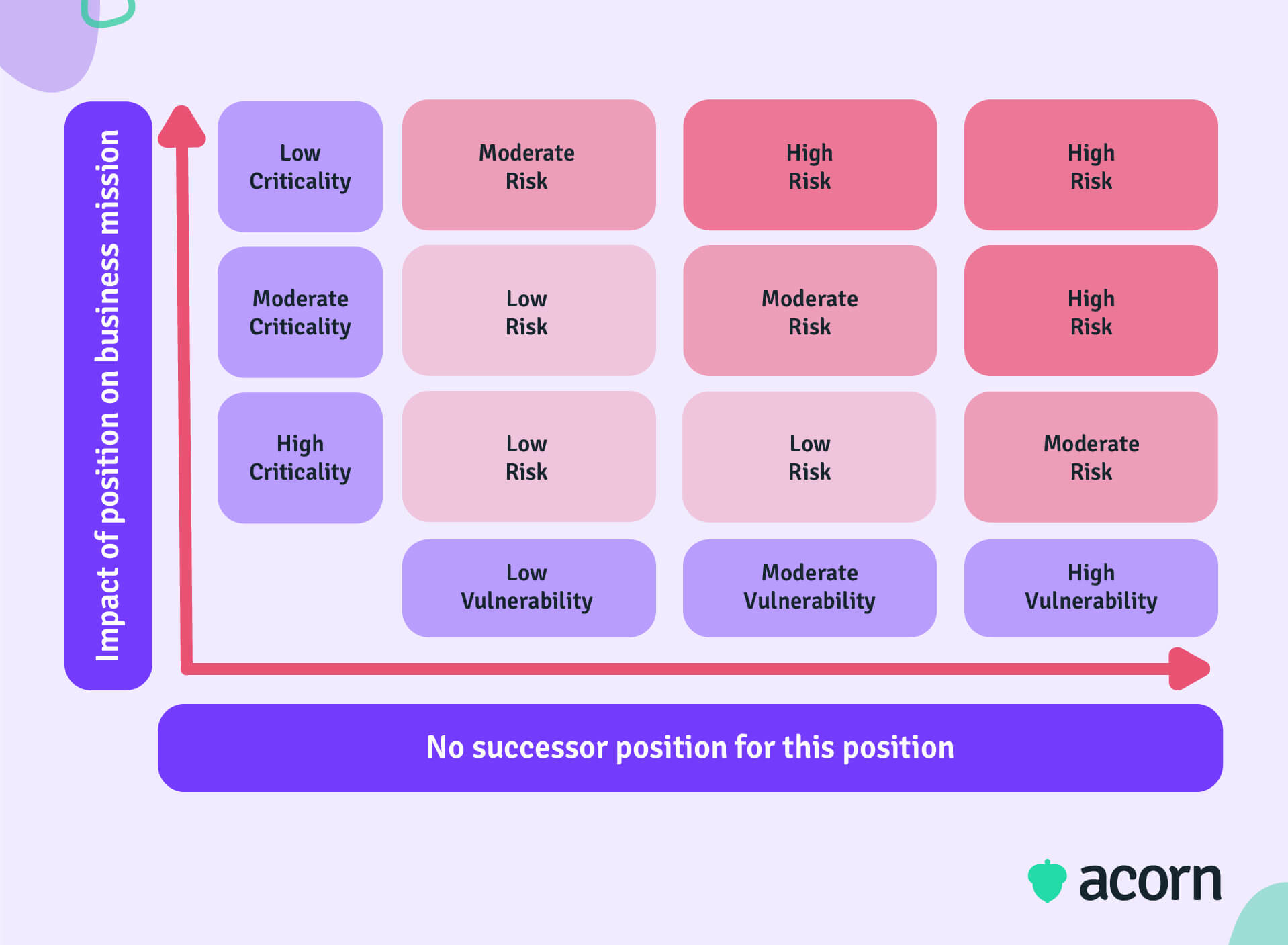
First, look at the roles with the greatest impact on your organisation’s mission. You’ll want to be looking for a few key factors to ensure these roles are:
- Central to competitive advantage
- Specific to the organisation or a business function
- Influential on resources and decision-making
- Likely to have large learning curves
- Based on experience and require it as a main form of knowledge acquisition.
You could even start with your leadership team, and over time branch through their business operations. From the roles identified, you need to find the roles without a successor. These are most vulnerable to knowledge loss within their teams. Losing the Chief Technical Officer, without an immediate successor, would have large ripple effects because of the potential loss of strategic direction.
If you don’t currently have a digitised system to track this information, start talking to leaders. Remember we’re not just talking about roles that are currently or imminently vacant. There should be a general plan for progression within teams, and if a leader does not think there’s a suitable internal successor, a plan for external hiring.
Step 2: Determine eligibility requirements
You can be guided by role descriptions and performance expectations. Consider the selection criteria that would be used if the position were vacant. That could be capabilities and experience necessary for the level of seniority, as well as the KPIs and expected outcomes the role is accountable for.
This ability to match capabilities is key to objective, fair, and accurate succession choices. Consider a job scorecard that is comprised of the skills, knowledge, and behaviours required in a role. Now, if that scorecard was within a system that housed all roles, scorecards, and the people in your organisation, how much easier would it be to uncover the person with the best experience for the role?
We factored this into our creation of the performance learning management system (PLMS), the only solution that intrinsically links learning and performance. Capabilities act as stepping stones for learning pathways, enabling you to continually identify, develop, and assess capabilities in line with succession plans. That in turn ensures you can measure real behavioural improvements—not just completions.
Note that this is not the same as a skills taxonomy or talent experience platform. The former simply lists skills; the latter focuses on the full talent “experience” (onboarding through to redeployment) without the nuance of capability development.
There is, of course, still some subjective analysis needed before you let a platform automatically assign people new roles. For example:
- Do they currently have shared or aligned responsibilities with the new role, and therefore on-the-ground experience?
- Do the current position’s responsibilities cultivate the core capabilities needed for the succeeding role?
- What gaps exist between the two?
Step 3: Create learning pathways
On that last question, we reach step 3.
If you take anything from this, it’s that the succession management process is about developing, not replacing. If you can create a consistent pipeline of competencies—from foundational to full capability—you’ll have:
- A ready pool of talent to recruit from
- Clear growth opportunities for employees
- Levers to pull in terms of unforeseen vacancies (as they will still appear).
Again, this is where one platform for both learning and performance will benefit you, not least because you can create learning pathways as soon as capability gaps are identified.
A capability-driven PLMS enables you to assess employees on their capabilities against the capabilities required of a role (say capability one more time). The results of a gap analysis show the learning opportunities. From there, Acorn PLMS will provide a development plan with content mapped to the necessary capabilities.
The advantage here is that you’re not losing time manually building development plans in a separate system from where performance reviews are conducted. Successors can also see, in real-time, how they’re progressing on development goals. And you’re seeing this in terms of the capabilities that drive and support business continuity—given all capabilities are derived from strategy.
Elearning shouldn’t be the sum total of leadership development programs. On-the-job training is key for successors to get hands-on experience with new and complex tasks. Stretch assignments, mentoring, and job shadowing are easy ways to test new capabilities in real-world sandbox environments.
Step 4: Continually review
To really reap the benefits of succession planning, you need to be continually identifying gaps—in both your succession plans and employees’ capabilities.
Succession planning isn’t a standalone process. It should be running in the background at all times, with a rolling evaluation plan in place.
That can mean measuring:
- The strength of your leadership potential pre-succession plan compared to now, through capability assessments
- The number of candidates ready to step into key positions or leadership roles now compared to before a succession planning strategy
- Uptake and engagement across the tools or processes used in learning and development
- Organisational performance, including strategy realisation, business growth, overheads, and revenue.
The biggest challenges in succession planning
Even with technology, succession management can be a political game. That’s if it’s not managed properly—or with objectivity in mind.
Perception issues
There may be concerns that a new succession planning strategy could upset job security, team dynamics, or development opportunities.
You need to be clear of the purpose when developing future leaders, and make sure those opportunities are equal. Capabilities provide equal footing and universal language for employees to talk about performance. That levels the playing field, and shows how all employees can progress from entry-level to senior leaders.
Bias
Where some organisations fall down is delegating succession planning to CEOs or getting team managers to identify and prime their own successors. One may not have the on-the-ground knowledge of high performers and the other may be too entrenched to see the bigger picture.
And when you leave a succession plan to the outgoing employee, there’s a tendency to pick a successor they like or relate to on a personal level. This is why scorecards and capabilities work; they ensure the requisite skills, knowledge, and behaviours are at the forefront of diverse talent decisions.
Assuming high performance
The Peter Principle holds that promoting for performance means an individual is eventually promoted out of their depth. Many remain in this final position because they can’t move up, impacting productivity. Not only that, but there’s a hole somewhere down the line since succession planning usually creates a cascade effect of movement in roles.
This is why it’s so important to understand potential and benchmark proficiency. Promoting based on solely past performance neglects potential—whether it exists or not. And if it doesn’t exist, no amount of training will create potential successors out of those who’ve reached their capacity cap.
Focus on existing roles
We’ve said it once and we’ll say it again: Don’t just look at your current roles. Effective succession planning ensures future business priorities are considered.
“The best time to plant a tree was 20 years ago. The second best time is today.”
Planning for a future bench improves said bench’s strength almost two times over. This is because your training plans develop capabilities needed for likely future scenarios, giving your organisation the gift of preparedness. It also contributes to morale; training helps employees feel skilled to meet changes in their responsibilities and the industry.
Key takeaways
Many see succession planning as replacement planning, or a fancier version of talent development programs. However, effective succession planning ensures more than availability of potential leaders. A succession plan:
- Creates processes to identify and develop key positions and key employees
- Puts the right people and skills in the right jobs
- Ensures organisational health isn’t dependent on a few charismatic executives
- Empowers fair and inclusive talent decisions.
Related Reads on This Topic

The Importance of Retaining the High-Potential Employee (aka the HiPo)
Retaining high-potential employees (HiPo) is highly important for any business. Find out why and how your company can achieve this…

Why You Should Use a Leadership Capability Framework When Developing Leaders
A leadership capability framework is designed to outline the skills, knowledge, and abilities required to perform a leadership role…

The Step-by-Step Succession Planning Process and How it Benefits Your Business
The succession planning process is a methodology for developing successors within your business. Read on to learn how to build your process…
